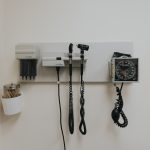Under Review: No
Issued by Council: Jan. 1, 2010
Reissued by Council: Jan. 1, 2021; April 1, 2017
Note: a glossary of terms can be found at the end of this document. Glossary terms are indicated in teal with a “G” throughout this document.
Preamble
This standard applies to “job actionG,” which is the threatened or actual withdrawal of servicesG to further a negotiating position during a dispute. The ultimate responsibility for any withdrawal rests with each regulated member to ensure their actions are consistent with the ethical and professional standards expected of regulated members.
A regulated member’s decision to close or leave a medical practice or to change their pattern of practice based on personal or financial considerations does not constitute job action unless these actions are intended to compromise access to physician services to further a negotiating position. Regulated members must abide by the relevant standards of practice when closing, leavingG or making changes to their scope of practice.
The Job Action standard of practice does not affect the ability of regulated members to advocate for their patients’ interests, their own interests or the interests of the health care system as a whole; however, if this advocacy is accompanied by job action, as defined, the provisions of this standard of practice apply.
Wherein evaluating a dispute involving a limitation or withdrawal of regulated member services CPSA determines the alternative resources established are ineffective or inadequate, such that an undue risk of harm to patients has been created, CPSA may insist that some or all of the regulated members involved in the withdrawal of service must continue to provide medical services that are in alignment with this standard of practice. In these circumstances, in accordance with its legislated responsibility to establish and enforce ethical and professional standards of practice, CPSA must consider the prevention of patient harm as its primary responsibility and take whatever action is available under the Health Professions Act to meet that responsibility.
Standard
A regulated member must not engage in job action, except under extremely controlled circumstances. The following must be considered prior to the contemplation of any form of job action:
- Regulated members must fulfill their professional responsibilitiesG and uphold the reputation of the profession by providing services to those in need of urgent/emergentG care during job actions.
- In determining what constitutes urgent/emergent or necessary medical care, regulated members must use their clinical judgment, informed by the existing health status and specific needs of patients, and regulated members’ individual and collective responsibilities to provide care.
- When contemplating a job action, regulated members must first explore all alternative options that may be available to resolve the concern that has motivated their desire to withdraw services.
- If the concern cannot otherwise be resolved, regulated members must consider the following before making the decision to withdraw services:
- what is in the best interests of patients;
- whether patients will be abandoned;
- whether patients will be deprived of access to urgent/emergent medical care; and
- whether patients will be put at risk of harm.
- If, after carefully considering the above factors, regulated members decide that proceeding with a withdrawal of services is not contrary to their professional responsibilities, they must take into consideration the impact on patients in their unique clinical circumstances and consider the following:
- the nature and location of the practice and the patient population served; and
- the availability and adequacy of alternative resources for the care, ongoing monitoring and transfer of patients.
- In order to protect patients in the event of a withdrawal of services, regulated members must:
- make arrangements for communication or consultation with other care providers to ensure the appropriate transfer of careG of patients. This may require physician-to-physician communication in situations where a regulated member is required to re-assess patients;
- provide written notification of the intended withdrawal of services to CPSA, appropriate health authority medical leaders and others involved in the delivery of hospital and medical services: the period of notice may vary depending upon the specific circumstances, but must be reasonable to allow the hospital or health authority an opportunity to review with the regulated members the nature, extent and impact of the proposed action and to consider any arrangements that need to be made in response;
- maintain awareness of the impact of the withdrawal of services on an ongoing basis to ensure the initial arrangements for patient care continue to be adequate; and
- if urgent/emergent care requirements are not being met, alter the arrangements to ensure patients receive adequate care.
- An entire groupG of regulated members or an entire hospital department must not engage in a withdrawal of services for the purpose of job action unless all the requirements of clauses 3-6 are met.
- Regulated members may want to obtain independent legal advice from the Canadian Medical Protective Association (CMPA) or legal counsel regarding their legal responsibilities.
Glossary
Job action: the threatened or actual withdrawal of services to further a negotiating position during a dispute.
Withdrawal of services: for the purpose of this standard, withdrawal of services is defined as a limit to the services an individual physician or group of physicians provide to further a negotiating position during a dispute.
Closing/leaving practice: the discontinuation of practice with no intention of returning, a leave of absence more than 12 months or a significant move from the current practice patients could not reasonably be expected to travel. See the Closing or Leaving a Medical Practice standard of practice for more information.
Urgent/emergent: a condition is considered “urgent” when it is not life-threatening, but requires care in a timely manner (within 24 hours); “emergent” care is medical care that, if not provided, would likely result in the need for crisis intervention due to concerns of potential danger to self, others or grave disability.
Professional responsibilities: in accordance with the Standards of Practice, Code of Ethics & Professionalism and the Code of Conduct.
Transfer of care: the transfer of full or partial responsibility for a patient’s care to another healthcare provider, consisting of clear communication (including a timely written summary) to the accepting healthcare provider, as well as identifying roles and responsibility to the patient, as expressed in the Transfer of Care standard of practice.
Entire group: the makeup of a group is contextual and will depend on the resources available to the community.
Acknowledgements
CPSA acknowledges the assistance of the College of Physicians and Surgeons of British Columbia, the College of Physicians and Surgeons of Ontario and the College of Physicians and Surgeons of Nova Scotia in preparing this document.
Advice to the Profession
All ResourcesAbout the Standards of Practice
The CPSA Standards of Practice are the minimum standards of professional behaviour and ethical conduct expected of all physicians registered in Alberta. Standards of practice are enforceable under the Health Professions Act and will be referenced in the management of complaints and in discipline hearings.
Questions?
For questions or archived standards, policies and guidelines contact our Standards of Practice Advisor.























